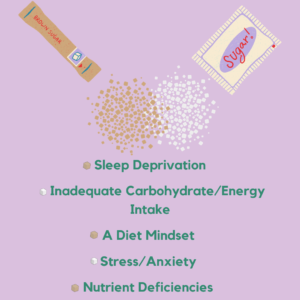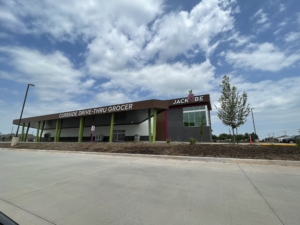Sweet Victory: The Science Behind Your Sugar Cravings
Do you ever find yourself desperate for something sweet and not finding satisfaction until you finally get that bowl of ice cream or a slice of cake? Many of us have been there, wrestling with a sugar craving that feels impossible to shake. While sugar and other simple carbohydrate foods are not to be demonized or considered “bad,” these desires can be detrimental to one’s physical and mental health, particularly when they occur often or regularly. But is it a matter of low willpower, or is there more to it? Below are a few scientific drives for increased sugar cravings.

The Why Behind the Craving
• Poor sleep: Sleep deprivation can disrupt hormonal regulation, including hormones that control hunger and appetite. This hormonal imbalance can lead to increased cravings for high-calorie, sugary foods.
• Inadequate energy/carbohydrate intake: Dips in blood sugar due to lack of caloric consumption or, more specifically, low carbohydrate intake have been shown to cause an increase of neuropeptide Y. Neuropeptide Y is a neurotransmitter (or messenger to the brain) that stimulates appetite and increases the desire for carbohydrate foods.
• A diet mindset: Similar to the abovementioned reason, just thinking about restricting foods and food groups can significantly increase our desire for those “restricted” foods. Food deprivation increases neuropeptide Y and cortisol production, driving up those cravings even before we begin to limit them.
• Anxiety/stress: Appetite and stress are closely related. High stress levels can trigger cravings for foods high in sugar due to their ability to provide a temporary sense of relief. Sugar consumption can stimulate the release of feel-good neurotransmitters like serotonin and dopamine. Getting that boost of serotonin and dopamine during and after consuming sugar-rich foods can lead to the unhealthy habit of utilizing food as a “treat” after a stressful day or situation.
• Nutrient deficiency: A deficiency in a nutrient or multiple nutrients has been shown to increase cravings for carbohydrates. Those deficiencies include magnesium, zinc, B vitamins, protein, fiber, iron, and chromium, to name a few. These deficiencies could be due to a lack of variety in the diet or poor overall intake.

Combatting Cravings
The first step in combatting your cravings is to find the root cause (or causes) of the specific food desire you are experiencing. Documenting your mood/emotions, daily intake, and cravings may help with this. This mindfulness practice can lead to self-discovery and empowerment as you delve deep into the why behind the sugar cravings and explore the remarkable idea of treating the root cause rather than just the symptoms. Working with a registered dietitian is recommended as they can decipher these food behavior logs expertly and create a nutrition intervention that meets your unique needs.



 create a positive environment for them to learn and grow!
create a positive environment for them to learn and grow!




 What is the Regional Food Bank of Oklahoma?
What is the Regional Food Bank of Oklahoma?